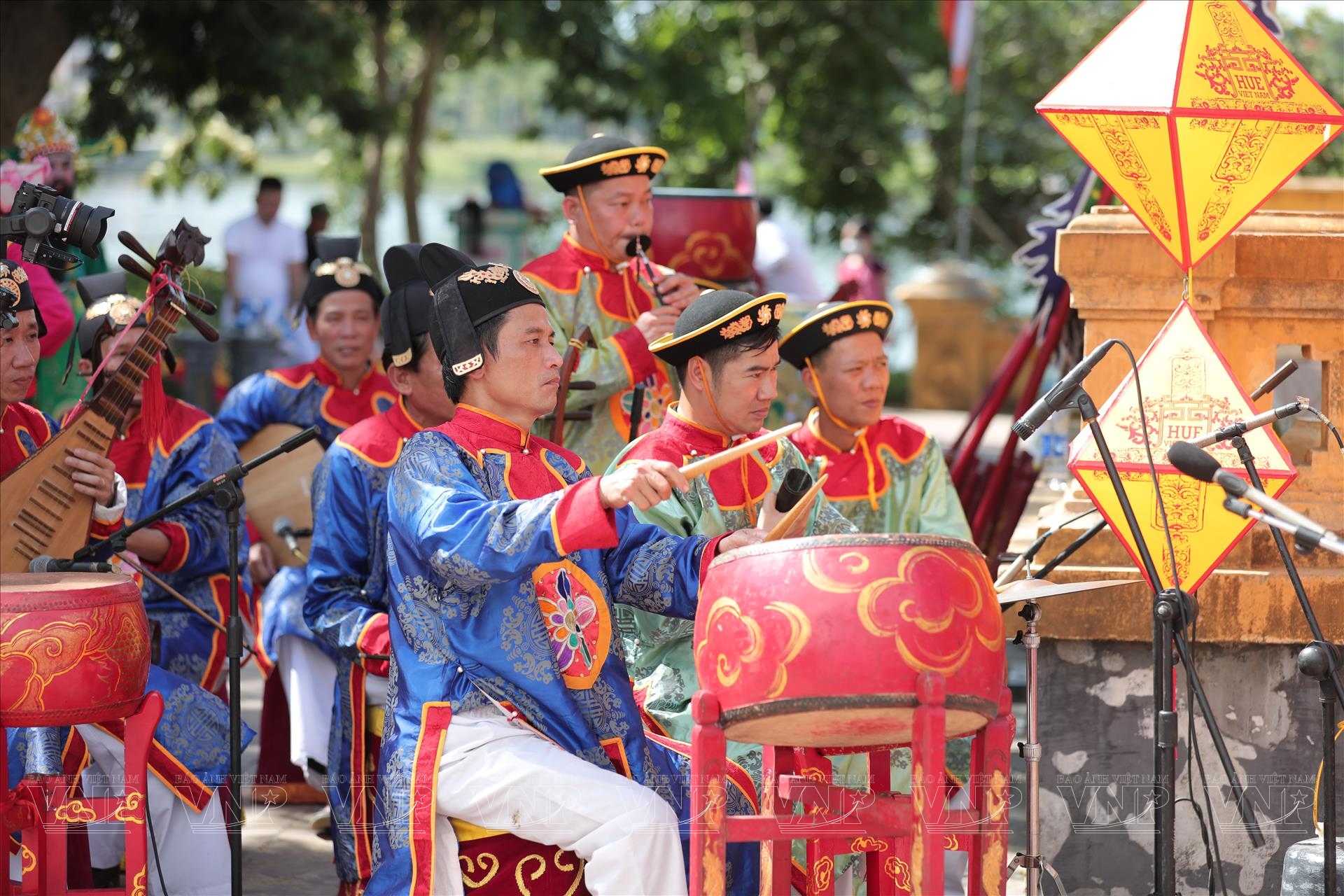Over time, the tuong (classical art) of Hue has gradually disappeared, but fortunately, the passionate artists of the Hue Traditional Royal Theater have tried to preserve andare seeking to revive this unique art form.
Tuong, also known as bo singing” or “boi singing”, is a famous traditional musical form of Vietnam. According to historical books, tuong began during the 13th century (Tran Dynasty) and flourished in the 19th century (Nguyen Dynasty).
In this art form, there is a combination of many elements such as singing, dancing, music, fine arts, literature, and acting. The actors are dressed and made up elaborately and impressively. The content of the plays often have a majestic sound, upholding the spirit of patriotism and loyalty, ready to sacrifice themselves for a great cause.
During the Nguyen Dynasty, tuong was performed in the imperial palace. According to history, King Thanh Thai (reigned from 1889 - 1907) was so passionate about tuong that he didn’t only give money but also gave titles to many good tuong performers. He is also known as the only emperor who performed tuong on stage.
A royal tuong performance on the road to the Imperial City of Hue. Photo: Cong Dat/VNP
Impressive image of tuong artists on the street in Hue. Photo: Cong Dat/VNP
Visitors and locals are interested in a royal tuong performance on the road. Photo: Cong Dat/VNP
Artists dressed up as many characters attending the street performance. Photo: Cong Dat/VNP
More than 200 artists participate in a street performance to introduce and promote Hue royal tuong. Photo: Cong Dat/VNP
A royal tuong performance on the road to the Imperial City of Hue. photo: Cong Dat/VNP
The street performance artists go through Hien Nhon gate to Dai Noi. Photo: Thanh Hoa/VNP
During the reign of Minh Mang (1820-1841), the king built the Duyet Thi Duong Theater, the first one in the imperial palace, to perform tuong plays for the royal family. During the reign of King Tu Duc (1847-1883), tuong flourished and the king ordered to build the Minh Khiem Duong Theater where good musicians and singers gather to practice and perform.
The tuong art of Hue reflects the worldview of the Nguyen feudal society and is an exemplary symbol of classical theater and the nation's artistic heritage.
Since the end of the Nguyen Dynasty, over the years, the dust of time gradually obscured the glory of Hue’s tuong. Fortunately, the artists of the Hue Royal Traditional Art Theater today are quietly and persistently overcoming many difficulties to preserve the precious heritage left behind.
Although it is no longer in its golden age, Hue’s tuong has still occasionally performed to tourists, which has partly revived the art form.
More importantly, the Hue Traditional Royal Art Theater is currently making big plans to revive this unique art form.
Recently, many classic plays have been successfully restored and put on in public performance at some festivals like New Year's Eve and Royal Eve.
A worshiping ceremony for Hue’s royal tuong’s ancestor at Thanh Binh worshipping hall. Photo: Cong Dat/VNP
At the worshiping ceremony at Thanh Binh worshipping hall. Photo: Cong Dat/VNP
Artists implement rituals to commemorate the ancestor of Hue royal tuong. Photo: Cong Dat/VNP
Tuong masks are on display at Thanh Binh hall. Photo: Thanh Hoa/VNP
Artists from Phu Hiep ward, Hue, prepare for their performance. Photo: Thanh Hoa/VNP
Putting on makeup before a performance. Photo: Cong Dat/VNP
Putting on makeup before a performance. Photo: Cong Dat/VNP
Putting on makeup before a performance. Photo: Cong Dat/VNP
Artist La Tuan dressing up as Manh Luong in a performance. Photo: Thanh Hoa/VNP
 A tuong performance at Nghing Luong Dinh. Photo: Thanh Hoa/VNP
A tuong performance at Nghing Luong Dinh. Photo: Thanh Hoa/VNPArtists before a performance. Photo: Thanh Hoa/VNP
A unique performance. Photo: Cong Dat/VNP
Expressive movements. Photo: Cong Dat/VNP
Impressive image of tuong artists. Photo: Cong Dat/VNP
 Musical instrumentalists at a tuong performance. Photo: Cong Dat/VNP
Musical instrumentalists at a tuong performance. Photo: Cong Dat/VNPA tuong performance reflecting the king's birthday for tourists visiting Dai Noi. Photo: Thanh Hoa/VNP